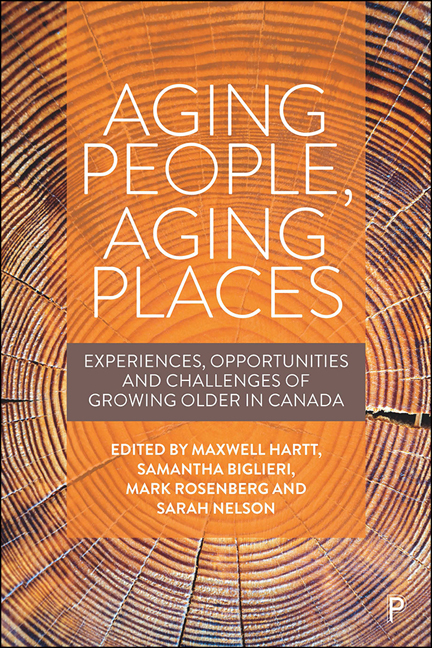12 - A profile of the rural and remote older population
Published online by Cambridge University Press: 18 December 2021
Summary
This profile is predicated on the assumptions of the diversity of the older population living in rural and remote Canada and the diversity of the communities themselves. The profile is constructed around four major themes: being older and living in rural and remote parts of Canada; the challenges and barriers to living in rural and remote areas; social inclusion, engagement, and ageism; and food and income security. The concluding section emphasizes directions that need to be taken and knowledge gaps.
Being older and living in rural and remote parts of Canada
The people in general and the older population in particular living in rural and remote communities share a set of characteristics that distinguish them from the urban population of Canada (DesMeules et al, 2011). There are higher proportions of low-income people and older people, higher proportions of people and older people with less education, as well as higher rates of smoking, obesity, and mortality. On a more positive note, it is argued that people in general and older people in particular have a stronger sense of community belonging than their counterparts living in urban Canada (DesMeules et al, 2011). Focusing only on older people, Keating and Eales (2011) paint a more nuanced picture of older people living in rural and remote communities contrasting ‘community active and stoic seniors’ who have the resources to age well and ‘marginalized seniors’ whose health is poor, who live on low incomes, and have poor social connections. A fourth group, ‘frail seniors’, are mainly described in terms of their status and higher service needs.
Looking back to the 1990s, Joseph and Cloutier-Fisher (2005) characterized older people living in small-town and rural Canada as ‘vulnerable people living in vulnerable places’. Their perspective was coloured not only by demographic changes, but by the loss of services and their consolidation in larger urban places. Consolidation of services was intended to address the fragmentation of services and to save money. Davenport et al (2009) characterized communities as being either ‘service rich’ or ‘service poor’ in Atlantic Canada, where rural communities were mainly identified as service poor.
- Type
- Chapter
- Information
- Aging People, Aging PlacesExperiences, Opportunities and Challenges of Growing Older in Canada, pp. 149 - 164Publisher: Bristol University PressPrint publication year: 2021



